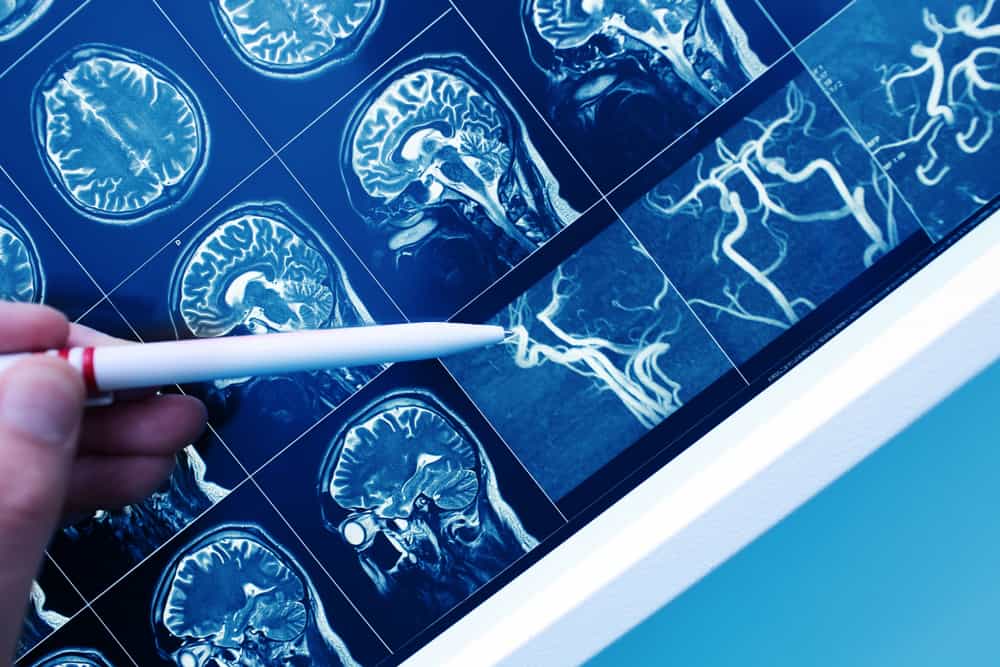
Vascular dementia is the second most common cause of dementia following Alzheimer’s disease. Although vascular dementia is recognized as common, experts believe it remains relatively underdiagnosed. In general, vascular dementia is caused by conditions that reduce blood flow to the brain, such as stroke, brain hemorrhages, or chronically damaged or narrowed blood vessels in the brain or at any location in the body. Insufficient blood flow can cause damage to brain cells, eventually killing them.
After receiving a vascular dementia diagnosis, many individuals are told that it is similar to Alzheimer’s disease. While those diagnosed with mixed cortical or subcortical vascular dementia may experience a handful of symptoms that are comparable to those found in Alzheimer’s disease, there are both clinical and pathological differences. This confusion leads individuals to wonder, “What is mixed cortical and subcortical vascular dementia?”
Below, we detail the key distinctions between mixed cortical and subcortical vascular dementia, other causes of vascular dementia, treatments, and how to understand cognitive and functional changes occurring in people living with vascular dementia.
Mixed cortical and subcortical vascular dementia can be differentiated by the location of damage, and there are clinical and pathological differences as well.
Cortical dementia develops as a result of disorders that affect the cerebral cortex, the outermost layer of the brain. Cortical dementia typically yields a dementia signature consistent with symptoms of Alzheimer’s disease, meaning symptoms primarily involve a decline in cognitive abilities, such as memory. Mixed cortical vascular dementia is the combination of multiple dementias, including vascular dementia, that expresses the cortical dementia signature in addition to that of vascular dementia.
In the most common form, the beta-amyloid plaques and neurofibrillary tangles associated with Alzheimer’s disease are present in addition to blood vessel changes associated with vascular dementia. According to the Alzheimer’s Society, mixed dementia accounts for at least 10% of dementia diagnoses. Symptoms of mixed cortical vascular dementia may include those of Alzheimer’s, those of vascular dementia, or a combination of the two.
Subcortical vascular dementia, also known as Binswanger’s disease, is caused by diseases of the small blood vessels that lie in the subcortex deep within the brain. The vessel walls become thick and narrow, resulting in reduced blood flow.
Due to the location of the damage, symptoms associated with subcortical vascular dementia are predominantly functional impairments similar to those of Parkinson’s disease. While some cognitive impairments may be present, symptoms primarily involve challenges with function and movement, such as psychomotor slowness, poor balance, unsteady gait, and changes in speech, among others.
There are several other causes of vascular dementia, including post-stroke dementia and single-infarct and multi-infarct dementia. The primary differentiation between vascular dementias lies in the causes of brain damage as well as the portion of the brain that is impacted.
A major stroke occurs when blood supply to a portion of the brain is suddenly and permanently cut off, providing insufficient blood flow to the brain. As a result, the brain does not receive enough oxygen, causing brain tissue to die. Depending on the severity of stroke and location of damage, the degree of vascular dementia symptoms can vary widely and may also include functional impairments in addition to cognitive impairments. Not all individuals who have had a stroke will develop vascular dementia; however, it is estimated that one-third of stroke survivors will experience a significant degree of cognitive impairment within the first months after the event.
Single-infarct and multi-infarct dementia are caused by one or more smaller strokes, respectively. When medium or large blood vessels become blocked with a clot, blood supply may be cut off for several minutes, leading to an infarct, or small area of dead tissue, within the brain. Similar to post-stroke dementia, the range of symptoms varies depending on the location and severity of damage.
Currently, the treatment of vascular dementia relies heavily on managing health conditions and controlling risk factors that contribute to vascular dementia. Implementing lifestyle changes, such as participating in regular physical activity, eating a healthy diet, engaging in mental and social activities, and avoiding alcohol and smoking may help slow the progression of vascular dementia.
While there are currently no approved treatments for vascular dementia, emerging research investigates how molecular mechanisms, such as oxidative stress, neuroinflammation, neuronal apoptosis, and synaptic plasticity, may provide future treatment options.
Individuals with mixed cortical vascular dementia involving beta-amyloid plaques may benefit from new Alzheimer’s drugs, such as lecanemab.
Regular assessments of both cognitive and functional abilities are critical for those diagnosed with vascular dementia to inform proper patient care and treatment. To do so, it is important to assess many neurocognitive domains and analyze highly granular data for the most detailed understanding of brain health.
Altoida’s mission is to accelerate and improve drug development, neurological disease research, and patient care. To learn more about our precision-neurology platform and app-based medical device, contact us!